Why the Beatles’ song Now and Then is the most important record of the past year
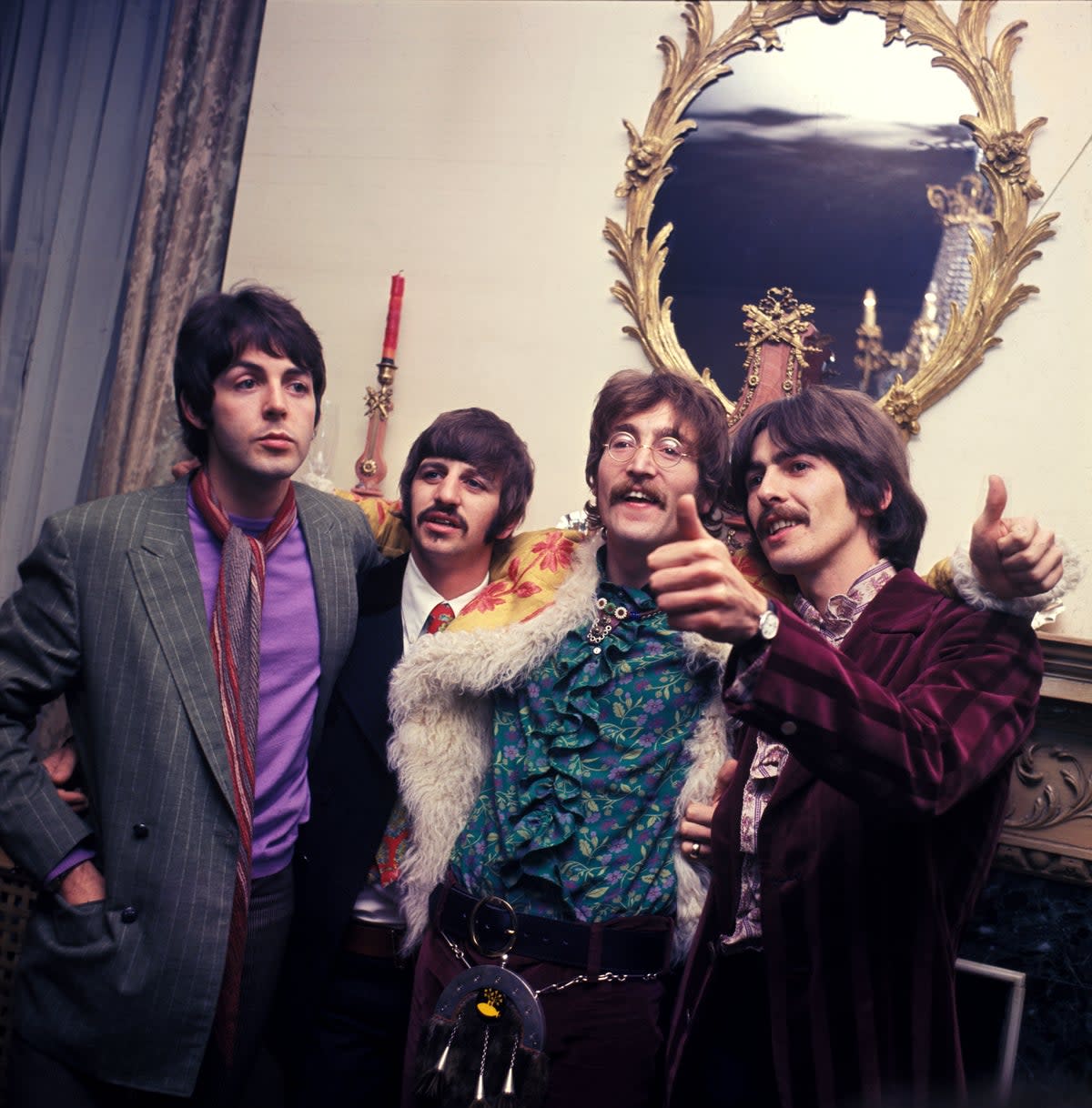
Wikipedia called it a psychedelic soft rock ballad, even though it was anything but. Some thought it slight, a filigree morsel. They listened and listened and, try as they might, were disappointed, and came away sensing corporate overreach and digital plagiarism.
Friends of mine in the music industry called it soppy, maudlin, wet. Others became sick of the hype almost immediately or complained about AI being used to enhance and delineate John Lennon’s croaky, indistinct voice. For me, and millions of others, it was a legitimate link with a part of our history which, even if we were too young to experience it first time around, remains hallowed and cherished. In 2023, the Beatles made another record. And it was good.
There were other so-called legacy releases that year: the much-celebrated Angry, by the Rolling Stones, which rather brilliantly repurposed the riff from Start Me Up, and Atomic City by U2, recorded to celebrate the start of the band’s epoch-making residency at the Sphere in Las Vegas.
Both were worthy of the people who made them. Now and Then was the record that properly resonated, though, because the seemingly never-ending story of the Beatles is the great counter-narrative of post-war Britain, a journey that links austerity and the end of rationing with IG and TikTok; that travels from the sexual revolution of the sixties to the creative insurgence of AI.
It is also a story of family, romance, heartbreak and renewal; a soap opera the likes of which we had never seen before. The Beatles were the most mediated entity of the late twentieth century, a phenomenon not unrelated to the fact that they were extraordinarily brilliant at what they did. And what they still continue to do (on a personal note, this is also why I am always slightly suspicious of those who claim not to like the Beatles; it seems like an irrational dislike of your children or your parents).
Now and Then was initially a demo, which Lennon had made in his New York apartment in 1977. In 1994 his widow, Yoko Ono, gave the recording to the surviving members of the Beatles, for inclusion on the multimedia Anthology project – a TV documentary, three-volume set of double albums and a book tracing the band's history.
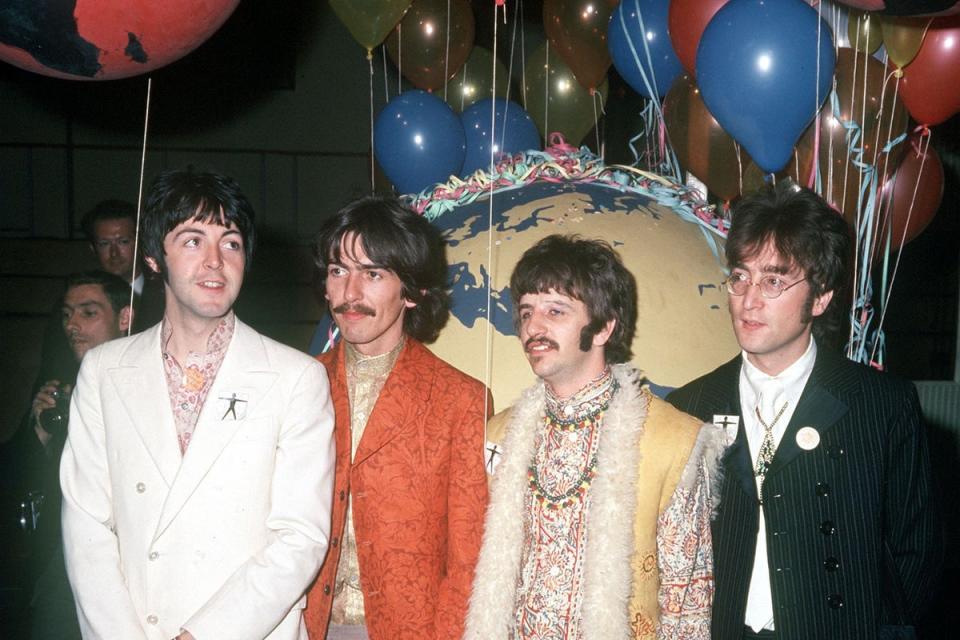
But while the band successfully tarted-up Lennon’s other demos – Free as a Bird and Real Love – they were unable to get Now and Then up to an acceptable standard. However, thanks the MAL software used on Peter Jackson’s Get Back, Paul McCartney and Ringo Starr were able to bring all four members back together for one final effort.
George Harrison was not a fan of the latest final Beatles single. Thirty years ago, he called it “fucking rubbish”. His widow believes, however, that he finally gave it his blessing through the medium of an old clock. Olivia Harrison says they bought a folk-art timepiece in 1997 that had Scrabble letters on the base spelling Now and Then. For years after George’s death in 2001 it sat in a summer house but last year, she brought it into the home and was just putting it on a mantelpiece when the phone rang. It was McCartney, asking her if she remembered the abandoned song, “I was looking at the clock dumbfounded,” she says. “It felt like some kind of sign from George. It felt like approval.”
During an interview with BBC Radio 1, McCartney explained: “Before John died, he was working on some songs, and Yoko spoke to George Harrison and said, ‘I’ve got a cassette with some John songs on that he never got to finish, would you be interested in finishing them off?’ So we thought about it, and we thought, ‘Yeah, it would be great’, 'cause in a way we would be working with John again, which we thought we would never be able to do.”
Unsurprisingly, we embraced it as though it were a new Harry Potter book, giving the Beatles their first number single since The Ballad of John and Yoko in 1969. The 54-year gap between them marks another landmark achievement for the Beatles, who have eclipsed a record set by Kate Bush in 2022 when Running Up That Hill landed at the top spot. Bush’s last song to reach number one – Wuthering Heights – came 44 years earlier.
And while there remains much debate about this, I think creatively Now and Then deserves to be considered in the same class as the finest work the band produced. Nothing can ever shake the emotional pull of the Beatles’ canon, but as an adjunct to their greatest hits, it is a greatest hit itself. As one fan said, having just heard the song premier on Radio 2, “I’m only in my mid-thirties but the Beatles were a massive part of my childhood with my parents listening to them, and now this new song. I’m in tears, it sounds so haunting yet so beautiful.”
The chatter about the quality of the production is interesting, as it’s purely the result of technological advances; as the record is a composite – a labyrinthine one at that – so everyone feels they have the right to notionally produce it themselves. No one questions the production of Lucy in The Sky with Diamonds, say, or Norwegian Wood, because that’s what they sound like. Similarly, as Now and Then has been built like a digital jigsaw, so we all feel we have the right to say, deep breath, it would have sounded better if they had a) double tracked John Lennon’s voice, b) made the acoustic guitar less intrusive, or c) been more mindful of the If I Fell key change. But it is what it is, and what it is, is very, very good indeed.
Of course there have been professional naysayers – The Telegraph’s wearisome Neil McCormack was predictably withering, calling the record “plodding soft rock” – and yet most of the carping has centered around the song’s sentimentality, a characteristic which was always part of the Beatles’ DNA, and is one of the reasons they remain so cherished.
It is also an elegy, burnished by McCartney to stand as a testimony to their time on earth. It might not be the band’s greatest song, nor its greatest record, but in many ways, it is their defining moment, because it feels like an echo of everything that went before. As a final gesture, it is not just fitting, it is almost perfect. Lennon wrote Now and Then as a love song to Yoko, but here it is recast as a tribute to his old friends, his band mates.
Now and Then might not be the band's greatest song, but in many ways, it is their defining moment.
Dylan Jones
“The Beatles always get lucky because this one is a really good song for now, almost like John is singing to his friends from beyond the grave,” says Giles Martin, who helped produce it. From him to them, then a family broth (Giles is the son of the band's original producer George Martin) of warm memories and harmonised love. In the same way that Jackson’s Get Back reestablished Lennon as the leader of the band (appearing towards the beginning of the film strung out on drugs, by the time of their rooftop performance he is very much back in charge), so Now and Then moves him very much to the foreground, only this time by McCartney. In essence this is now a song of brotherly love.
Every new Beatles project produces a kind of global media frenzy, an echo of the Beatlemania that swept Britain in 1963, and America a year later, when their appearance on The Ed Sullivan Show in February 1964, just months after the tragedy of J.F.K.’s assassination, lifted a depressed American mood.
On its release, inevitably there were many who were disappointed with Now and Then. But there were many more who were transported. One of the most effecting eulogies I read was a reader’s comment in The Guardian. “I had no idea how emotionally I would react to this song,” wrote Klara, 33, from London. “My youngest brother passed away last year from a brain tumour at 27. He was a big Beatles fan; he chose Beatles songs for his wedding and for his funeral – a lot of people commented that he had the music taste of someone twice his age. I had been wondering, in the lead-up to the release, what he would have thought of the band using AI to finish it, and if he’d have liked the final result.
"When I heard the opening lines, and the melancholy in John’s voice, I got chills all over. The sadness of the song encapsulates the emptiness you feel when you lose someone you love, and you know you have to continue on without them. I don’t know if I could have appreciated the song as much without having known this feeling. My brother had a habit of humming Beatles melodies to himself as he was out working in the garden, and I could imagine him singing the Now and Then chorus every time I listened to the song today. I wish my brother had been able to hear it; I think he would have given it a thumbs up.”
And if it remains our neverending story – A Word in Your Ear’s Mark Ellen says, “The Beatles are our happy place” – so it remains theirs, too. The Beatles were as blown away by their omnipotence as we were. This year just added to the lustre.
Like Lazarus suddenly appearing in Pepperland, Sgt. Pepper’s Lonely Hearts Club Band were back on the bandstand, their psychedelic Edwardian satin suits dry-cleaned and freshly pressed. Fifty-three years after “Let It Be” reached number one, the Beatles finally released their final record.
The story of a song
The story of Now and Then begins in the late 1970s, when Lennon recorded a demo with vocals and piano at his home in New York’s Dakota Building. In 1994, Yoko Ono gave the recording to Paul, George and Ringo, along with John’s demos for Free as A Bird and Real Love, which were both completed as new Beatles songs and respectively released as singles in 1995 and 1996, as part of The Beatles Anthology project.
Free as A Bird was a terrific song ruined by ELO’s Jeff Lynne’s awful leaden production and fat drum sound, while Real Love is now acknowledged as something of a mistake. At the same time, Paul, George and Ringo also recorded new parts of the third song and completed a rough mix for Now and Then with Lynne. At that point, technological limitations prevented John’s vocals and piano from being separated to achieve the clear, unclouded mix needed to finish the song. Now and Then was shelved, with a hope that one day it would be revisited.
Cut to 2021, and the release of The Beatles: Get Back docuseries, directed by Peter Jackson, which astonished viewers with its award-winning film and audio restoration. Using WingNut Films’ MAL audio technology, Jackson’s team had de-mixed the film’s mono soundtrack, managing to isolate instruments and vocals, and all the individual voices within the Beatles conversations.
This achievement opened the way to 2022’s new mix of Revolver, sourced directly from the four-track master tapes. This led to a question: what could now be done with the Now and Then demo? Jackson and his sound team, led by Emile de la Rey, applied the same technique to John’s original home recording, preserving the clarity and integrity of his original vocal performance by separating it from the piano.
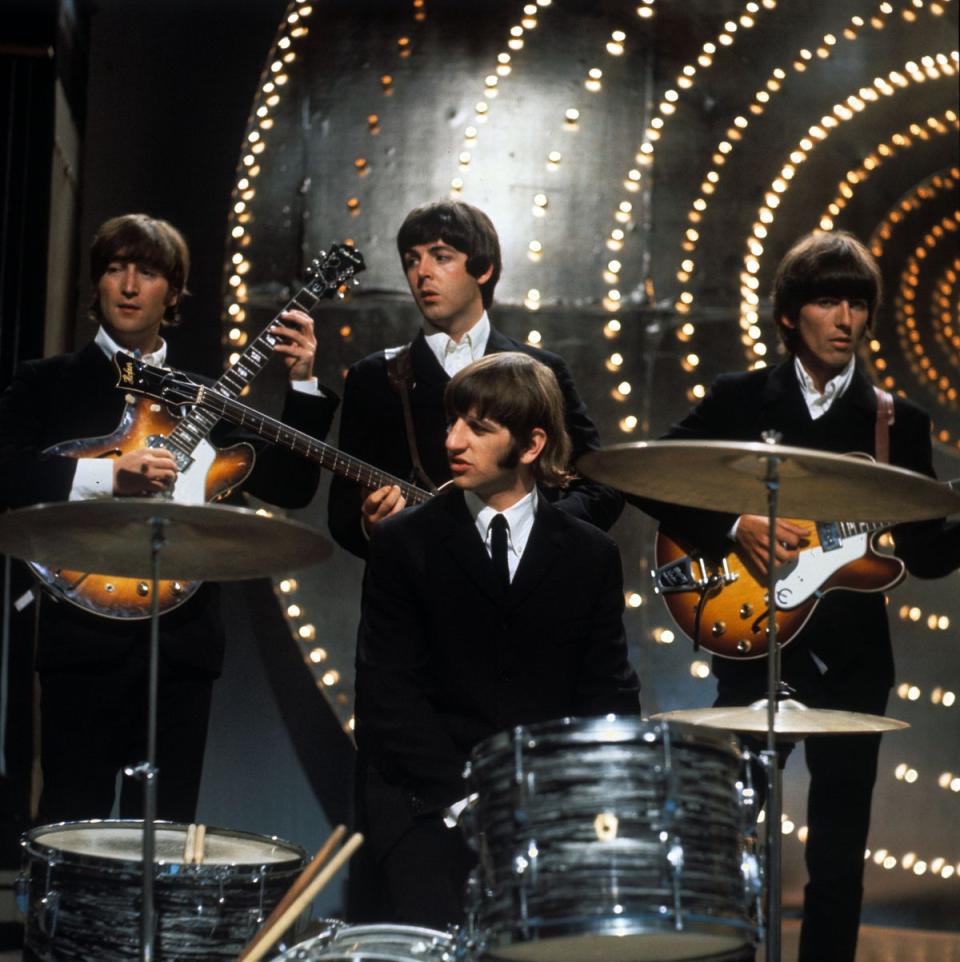
“There it was, John’s voice, crystal clear. It’s quite emotional," says Paul, who with Ringo, set about completing the song in 2022. Besides John’s vocal, Now and Then includes electric and acoustic guitar recorded in 1995 by George, as well as Ringo’s new drum part, and bass, guitar and piano from Paul, which matches John’s original playing. Paul added a slide guitar solo inspired by George; he and Ringo also contributed backing vocals to the chorus.
“It was the closest we’ll ever come to having him back in the room, so it was very emotional for all of us," says Ringo. "It was like John was there, you know. It’s far out.”
In Los Angeles, Paul oversaw a Capitol Studios recording session for the song’s wistful, quintessentially Beatles string arrangement, written by Giles Martin, Paul and Ben Foster. Paul and Giles also added one last, wonderfully subtle touch: backing vocals from the original recordings of Here, There and Everywhere, Eleanor Rigby and Because, woven into the new song using the techniques perfected during the making of the LOVE show and album. The finished track was produced by Paul and Giles and mixed by Spike Stent.
"We all play on it, it’s a genuine Beatles recording," Paul says. "In 2023 to still be working on Beatles music, and to release a new song, I think it’s an exciting thing.”
And it is brilliant. Neither a re-tread or an homage, it is something genuinely new, with a reinvigorated vocal, Ringo playing rimshot, and a melody for the ages. It is a classic Beatles single, and worthy of all the fuss.
“It was incredibly touching to hear them working together after all the years that Dad had been gone,” says Sean Lennon. “It’s the last song my dad, Paul, George and Ringo got to make together. It’s like a time capsule and all feels very meant to be.”
How Anthology changed Beatles history
This time capsule, came from a time when the Beatles were at an incredibly low ebb. The Anthology series started in 1995, serendipitously piggy backing onto Britpop, which was itself a massive echo of the Beatles’ heyday. Anthology was basically Beatlemania II.
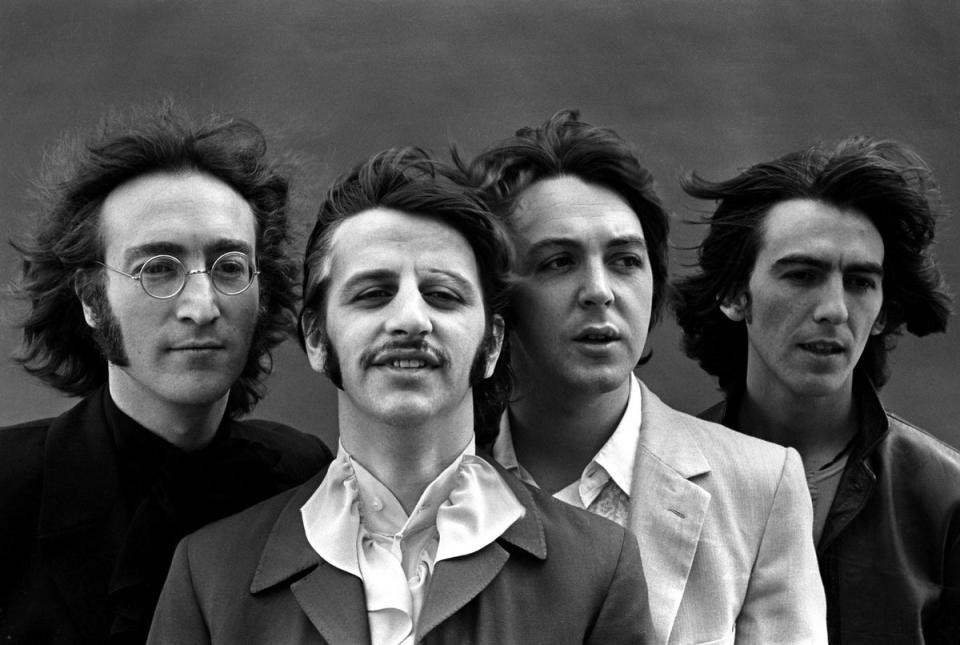
1995 was the year in which the Beatles had a full-on resurrection, although they were only partly responsible for it themselves. While the Anthology project certainly reignited interest in the band, the Beatles were also a fundamental part of the Britpop DNA, and hence unavoidable. Plus, Ian McDonald’s 1994 book Revolution in The Head: The Beatles’ Records and the Sixties had given them the kind of critical re-evaluation that was hard to ignore.
“A sunny optimism permeated everything, and possibilities seemed limitless,” he wrote. “The Beatles were at their peak and were looked up to in awe as arbiters of a positive new age in which the dead customs of the older generation would be refreshed and remade through the creative energy of the classless young.” The book’s commentary was not just encyclopaedic, its cultural scholarship painted the Beatles as genuine pop geniuses, and with good reason.
The same year also saw the pendulum start to slowly swing back to Paul McCartney from John Lennon; from hereon in it would start to be McCartney whom the culture would hold up as King Beatle. It was as if people had suddenly realised that, yes, while John Lennon was 15 years dead, we still had half of the greatest writing partnership in the history of pop still walking among us – making records, touring, appearing on TV, and influencing an entire generation of musicians and nascent pop stars obsessed with his old band.
In the Eighties, the Beatles had started to become vitiated, marginalised even, by a culture that perhaps felt it had learned everything there was to know about them. While the Beatles had never quite gone out of fashion, During the eighties the remaining members were probably at their lowest point creatively, with Ringo Starr narrating Thomas the Tank Engine, George Harrison releasing novelty songs like Got My Mind Set On You, and McCartney sullying his image with substandard album fillers.
Anthology changed all that. Anthology, and a generation of Sixties-obsessed musicians who weren’t even born when the Beatles started their journey. It was almost as though the stars of Britpop had been acting as fluffers for the Beatles, as for the last three years, not a week had gone by without a member of Oasis, Blur, Pulp or whoever making a reference to the Fab Four (Oasis themselves had been called the Sex Beatles, the coarse-grained Beatles, the Mancunian Beatles, the Burnage Beatles, and Noel Gallagher actually learnt to play guitar by listening to the Red and Blue Beatles albums).
“The Beatles invented popular music and the Beatles are an ideal for living,” said Gallagher. “And they are, of course, where I pinch all my songs from.”
Jarvis Cocker, another Britpop luminary, said, “The Beatles were the first group I was ever properly aware of. In my early teens I would sometimes stay in and listen to the radio all day in the hope I would catch a song by them I’d never heard before and be able to tape iton my radio-cassette player.”
Journalists contributed to this fetishistic narrative by constantly writing about the way in which Britpop was being framed by the Beatles themselves, or at least by the Beatles industry. If you trawl back through the mountain of press coverage surrounding even the most mediocre Britpop acts, it is remarkable how often you see the word “Beatlesque”.
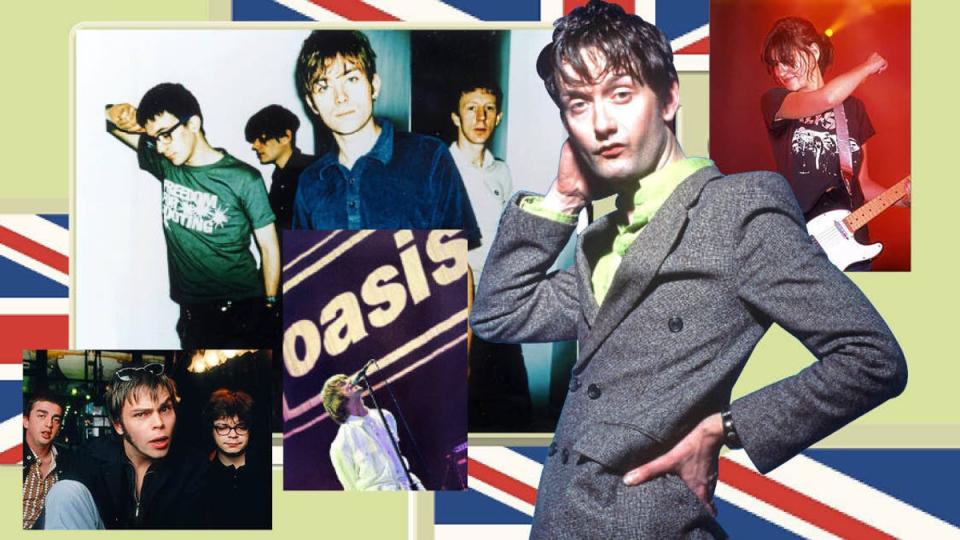
This could have been referring to anything from Penny Lane-style piano clusters, an overuse of cellos, close harmonies, colloquial lyrics, nonsense words, gang-like group photographs, upbeat radio interviews, Sixties-inspired clothes, Pop Art graphics, pudding-bowl haircuts, jangly guitars, rudimentary drumming – you could take your pick.
Hanif Kureishi once said that by 1966 the Beatles behaved as if they spoke directly to the whole world, and they did, but completely in their own vernacular: Beatleworld was a world full of ten-bob notes, dressing gowns, the National Health, plastic porters and men from the motoring trade. The Beatles were British, and their style and their idiom were as important and as influential as the music they made. Hence the wholesale adoption of the band by the protagonists of Britpop.
“The Beatles were freshly placed before the public by the Anthology series,” says David Hepworth. “Because this happened to be around the time of Britpop, they seem to have emerged from that process for many people as the Godfathers of Blur.”
The Anthology series afforded the band a resurrection of sorts, both for those who had fallen in love with them in real time – as they had defined and redefined the Sixties on a weekly basis, and additionally for those who were becoming acquainted with them for the first time, during a period which seemed to have been completely framed by the decade the Beatles more or less created.
All of a sudden the Beatles had some agency in their own legacy, and from then on they would start to control that legacy, by creating new Beatles products – 1, Let It Be… Naked, Cirque du Soleil’s Love, the Yellow Submarine Songbook and of course the all-important agreement between Apple Corps and Apple Inc, finally allowing the band’s songs to become available on iTunes – and contextualising their past in the process.
“We put the 20-year anniversary of Sgt Pepper on the cover of Q in 1987," says Ellen, who was then the magazine's editor, "and it seemed quite courageous at the time. No one was talking about the Beatles. They had yet to ascend to that plateau of immortality cemented by the release of Anthology in which they’ve occupied ever since.
"These days you can’t imagine their reputation will ever diminish as the more we discover about them – from new books, film clips, recording outtakes – the more it confirms how supernaturally talented they were.”
The biggest beneficiary in all of this was McCartney, who in a heartbeat experienced a huge re-evaluation by critics and musicians alike. McCartney was now a bizarre composite of groovy Sixties rocker and living, breathing – possibly up for a collaboration – Godhead.
McCartney was no longer the practitioner of piffle – he was a man who had helped invent the British post-war pop experience, and here he was, still walking among us.
Dylan Jones
McCartney was no longer the practitioner of piffle – the author of Mull of Kintyre, We All Stand Together, Mary Had A Little Lamb, and the man who had recorded a cover version of the theme to the appalling TV soap Crossroads – he was a man who had helped invent the British post-war pop experience, and here he was, still walking among us.
McCartney himself was also reacquainting himself with his old group. In the immediate aftermath of the Beatles, he was reluctant to acknowledge the importance of his previous existence (in his eyes he was a box-fresh performer, publicly spooning with his beloved wife, Linda, in Wings); he expected to be afforded the respect of his fans, without wanting to explain why. He was a Beatle, after all; he just didn’t want to be reminded of the fact. But in the mid-Nineties he started to grow more accepting of his past, no longer bristling when pesky journalists brought up his mop-top achievements.
Before Anthology, he would often only talk about the Beatles reluctantly, but afterwards it was like a switch had been flicked, and he would start to mention his old band mates without being prompted. The immediate success of the Anthology series appeared to make McCartney relax a little and move easier in his skin.
McCartney had once seen himself as a variety artist, a tinker able to knock off a ballad as well as a sweaty R&B workout, an all-round entertainer firmly rooted in the tradition of the music hall. Always a staunch traditionalist, the man responsible for some of the most far-reaching and influential music ever recorded had, in the years since the Beatles collapsed, often seemed tyrannically nostalgic for the early days of rock’n’roll.
Yet his work had continued to pop and fizz, and as we started to look at McCartney’s solo work with renewed interested, it became possible to imagine lots of it sitting quite happily next to Lennon’s abrasive psychedelia or Harrison’s partially composed complaints on any number of Beatles LPs.
So after Anthology, the re-evaluation of Beatle product became a profession in itself. Everything the Beatles did was ripe for re-examination. In the Eighties, the received wisdom was that Sgt Pepper was the jewel in the Beatle crown, the highlight of the canon. But around the time of Anthology, critics started to say that Revolver was the real pinnacle of the band’s creativity (the formative flushes of psychedelia, a proper spread of styles etc) – but then soon after it was the turn of the White Album, a double album that hitherto had been considered a mediocre curate’s egg.
According to the powers that be (rock critics over the age of 35) The Beatles was not only the best Beatles album ever made, it was also – bar the odd Bob Dylan LP – the greatest album ever made by anyone. Which was obviously not the case, because then it became the turn of Rubber Soul, and then, almost inexplicably, A Hard Day’s Night, the soundtrack album to the Fab Four’s second film, recorded in July 1964.
But then as soon as this was suggested, it all made sense. This was not only the first Beatles album to feature entirely original compositions, but – while Paul McCartney was (is) undoubtedly the stronger songwriter – it was the high-water mark of John Lennon’s Sixties songwriting; never again would he scale these heights, never again would he match McCartney for sheer volume and variety.
The second side contains the best selection of Lennon songs on any Beatles LP, songs which suggest he could have gone in many other directions had the drugs, the apathy and the cynicism not devoured him. McCartney would go on to write better, more iconic songs, but this album showed the band at their cohesive best.
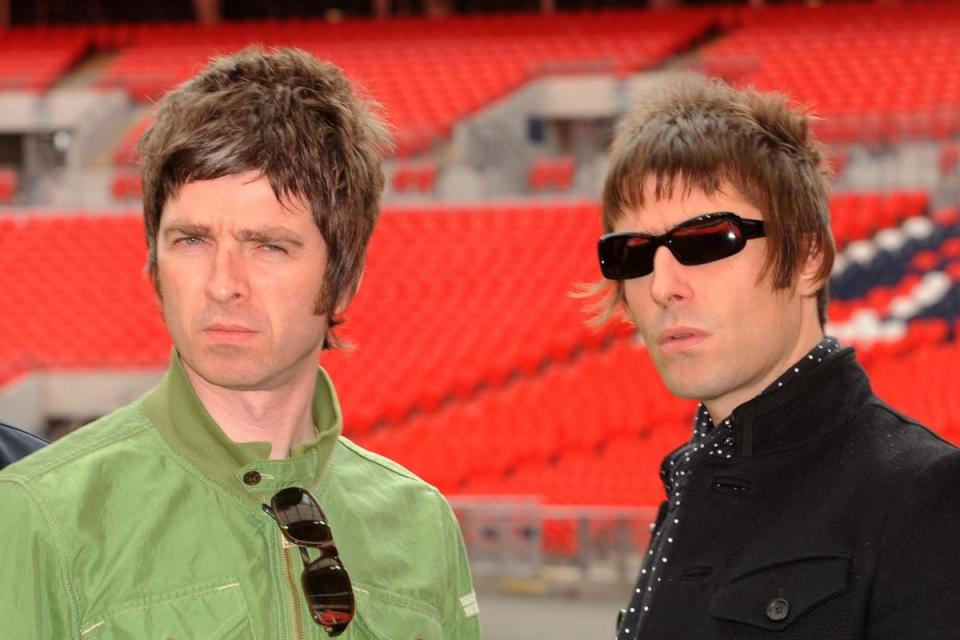
None of this escaped McCartney’s notice, and he was grateful for the attention. Of course, it didn’t hurt that he was adored by Noel Gallagher, who used every interview to espouse his love for McCartney’s former band. In fact, Gallagher loved Paul McCartney almost as much as he hated his brother Liam.
“Stella McCartney, who I’d never met, was having her first ever fashion show in London,” said Gallagher. “This would have been 1994, and I was still living in a basement flat in Camden at the time. Somebody called my flat and said that Stella’s having a party [at her father’s house] and did I want to come across.
"They didn’t tell me that McCartney might be there, as they thought I might freak out, kind of thing. So we went to his gaff, and Twiggy answered the door. And in this room on the left as we walked in was this embossed wallpaper, with hand-painted flowers, which is what they used to do in the Sixties when they were tripping. And inside, dancing to Desmond Dekker’s Israelites, was Paul McCartney. There was a juke box in the room.
“Somebody said, ‘This is whatsisname from Oasis,' and he went, ‘Hey man, great to meet you.’ And he said something about my song] Slide Away. And I happened to have a brown suede jacket on that looked very reminiscent of the cover of Rubber Soul, and I kinda had longish hair.
“And he said, ‘Hey, you look like a Beatle.’
“And I said, ‘So do you.’”
Linda McCartney was the hostess for the evening, and she organised for some vegetarian food to be offered around “at silly o’clock in the morning”, and then McCartney took Gallagher down to the bottom of his garden, where he had a meditation bubble.
"It’s literally a glass bubble with a round bed in it, like a large Christmas snow dome. Me and him get in, and he pressed this button, and the bed goes up into a tinier bubble, and he said, ‘Yeah, we used to come out here in the Sixties and look at the stars.’ Just me and him. And I’m thinking, he better not try and get off with me! Ha! He’s an amazing dude, such a warm, open, brilliant… he’s a proper geezer, man, I love him.”
McCartney’s equity at the end of 1995 was higher than it had been in years. Ditto George Harrison and Ringo Starr. The Beatles were back in business, and business was good. Free as A Bird may not have been the self-allusive masterpiece the Beatles wanted it to be, but the collective goodwill that accompanied their re-emergence was to carry the band onto even greater heights. Since their inception, in 1960, they had been avatars of goodwill, and their newfound re-fame weirdly made them seem even more benevolent, even more able to spread the love.
Peak Beatles? We weren’t even close.
Perhaps at the time it wasn’t so surprising that the Beatles’ equity had been so low. In a sense their previous existence had been defined by the murder, in 1980, of John Lennon, allowing a narrative to develop that cast the more acerbic Beatle as the band’s creative, tormented leader, and the remaining members as A-grade also-rans.
In the popular imagination, John Lennon had been the anguished firebrand, the one who pushed the envelope until it broke. But this assumption started to change after Anthology, as Paul McCartney came to be seen as the real architect of the band.
Until Anthology’s release, the consensus was that Lennon’s death had cast a pall on the group, leaving his former bandmates to explore mediocrity while he remained inviolate. It had been Lennon who always appeared to be pushing the others, Lennon who was the most outspoken, and Lennon who could occasionally look frightening. The John Lennon/Plastic Ono Band album in December 1970 was such a statement of intent that it looked as though he would own the decade to come.
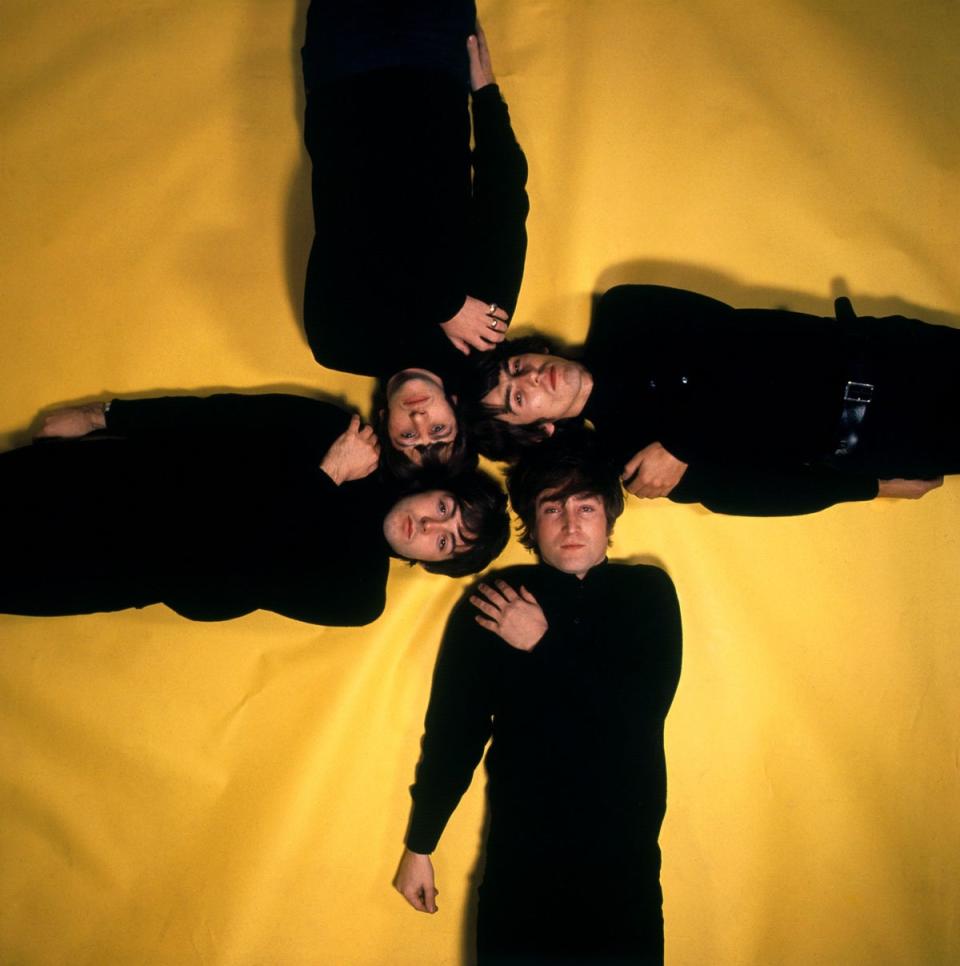
And even though he was only operational for another five years, and even though his quality control during that period was as bad as the other ex-Beatles – he followed Imagine, his commercial high point and his most memorable record, with Some Time In New York City, an agitprop double album that revelled in its exploration of sexism, racism, colonialism and incarceration – it was Lennon whose photo adorned the most button badges.
While it would be invidious to say that Lennon died at the wrong time, when he was fatally shot by a deranged fantasist in the archway of the Dakota building, in Manhattan, on 8 December, 1980, his critical standing was hardly at its peak. Double Fantasy, the comeback record he had made with Yoko Ono, had been released just a few weeks before and had been resoundingly panned by the critics.
Rolling Stone hated it. The Times hated it. Everyone seemed to hate it. It was labelled weak, lame and completely bereft of cultural relevance. In one especially perceptive review, the NME’s Charles Shaar Murray wrote, “It sounds like a great life, but it makes for a lousy record,” and, “I wish Lennon had kept his big happy trap shut until he had something to say that was even vaguely relevant to those of us not married to Yoko.”
And yet as soon as he was shot, he became a legend. In 1980, Beatles just didn’t die and, even though Lennon had been largely invisible since 1975, in his absence he had acquired an almost mythic glow. The tributes framed Lennon as the Beatle who had been a tearaway in Hamburg, framed him as the misanthrope who had defined – no, invented – sardonic rock lyrics in the sixties. He was the sharp-tongued middle-class yob who didn’t take any crap from anyone, the oven-baked rock star with the ever-ready quips – never forget that it was Lennon who said, about his own bandmate: “Ringo? He’s not the best drummer in the world. You know what? He’snot even the best drummer in the Beatles.”
Work on The Long and Winding Road (which was what Anthology was called before George Harrison put his foot down about the series being named after a McCartney song) had started almost as soon as the band broke up in 1970, but because of the various contractual issues concerning manager Allen Klein’s relationship with the band, the project was in abeyance for years.
The Klein issue was resolved in 1977, but almost as soon as it was, Apple began another bout of legal battles with the company which still owned most of the Beatles’ recordings, EMI. The issues related to everything from packaging charges to CD royalty rates, and they kept both parties busy until the end of the Eighties. Anthology was revived in earnest at the start of the Nineties, and work on the documentary series started in 1991.
By 1994, with the six-part documentary series in full production mode, McCartney, Harrison and Starr were ready to fully immerse themselves in the musical side of the venture, editing the vast collection of Beatles outtakes and exploring the possibility of making some new music.
With Free as A Bird, the idea was to build the song, layer upon layer, creating a modern Phil Spector-style sound, albeit one administered by Jeff Lynne. McCartney and Harrison competed over who should write the lyrics for the unfinished passages, and on this occasion, McCartney won.
Free as A Bird was a beautiful song, but it was rather ruined by Lynne’s ham-fisted production technique, which made it sound like a dirge. Although he didn’t really like being asked about it, if pressed, George Martin admitted at the time that the reason he didn’t produce Free as Bird (and the follow-up, another tarted-up Lennon song, Real Love) was because George Harrison didn’t want him to.
When it was released, Martin used his partial deafness as an excuse, and said he didn’t have the time. Considering that he could hear well enough to cast his eyes and ears over every other song on Anthology I, II and III, and that he had spent years doing so, the excuses rang somewhat hollow.
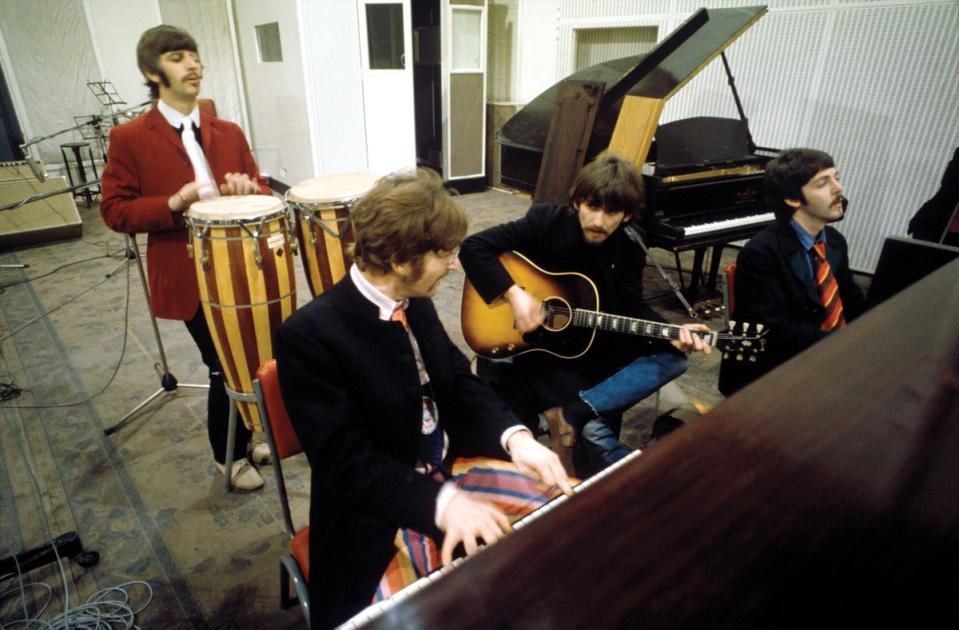
Soon after, he changed his story.
“I wasn’t asked,” he said. “I heard the quality of what they had to deal with, and it was quite a problem. If I had been asked to do it then I probably would have done it, but I wasn’t asked. I didn’t have any great regrets, so it was no skin off my nose. I think if I had produced it, it would have been a different sound.”
And then some.
“They stretched it and compressed it and put it around until it got to a regular waltz control click and then they were done,” he said. “The result was that in order to conceal the bad bits they had to plaster it fairly heavily, so that what you ended up with was quite a thick, homogenous sound that hardly stops.”
In the hands of Martin, it could have been a classic, but in Lynne’s clammy, eager little mitts it sounded like a Rutles b-side (Lynne always was the archduke of the moptop knockoff, even when creating mini-masterpieces for ELO – Lennon once said that the reason ELO stopped having hits was because they’d run out of Beatles songs to copy).
As the Beatles biographer Philip Norman said, there had probably never been a record that more people wanted to love, although inevitably it was a disappointment. How could it not be?
The reunion record was actually never going to sound any different. When McCartney came up with the idea of recording a “new” Beatles record to supplement the outtakes, demos and forgotten songs which constitute the Anthology albums – whenever Ringo went down to dinner with him in Sussex, he would bring it up, and he would do the same over the phone with George – Harrison took the chance to get his own back on Martin.
The Beatles producer had never been overly enamoured by Harrison’s writing, and, with a little help from Lennon and McCartney, had kept him at arm’s length from benediction by making sure he only got one or two songs on each album. So when McCartney suggested the record, Harrison insisted they get Lynne, his fellow Travelling Wilbury, to produce it.
Not that the sessions were without incident. Harrison reportedly left at one point, claiming that McCartney was being too bossy. “It was just like the Beatles all over again,” he told friends.
Having agreed to pursue the Anthology project, they quickly realised that what they didn’t need, or rather what the world didn’t need, was a three-quarter Beatles record.
Hello, Yoko?
On New Year’s Day, 1994, McCartney phoned Yoko, asking if she had any of John’s old demos that they could perhaps use as a base for a song. The three of them had been working on some instrumental music to be used in Anthology and apparently the work hadn’t been going so well. And so Yoko sent over a couple of cassette tapes containing four songs: Grow Old with Me, Free as A Bird, Feel Love and Now and Then. Harrison didn’t initially love Free as A Bird, as “I sort of felt John was going off a little bit towards the end of his writing." But he eventually came around.
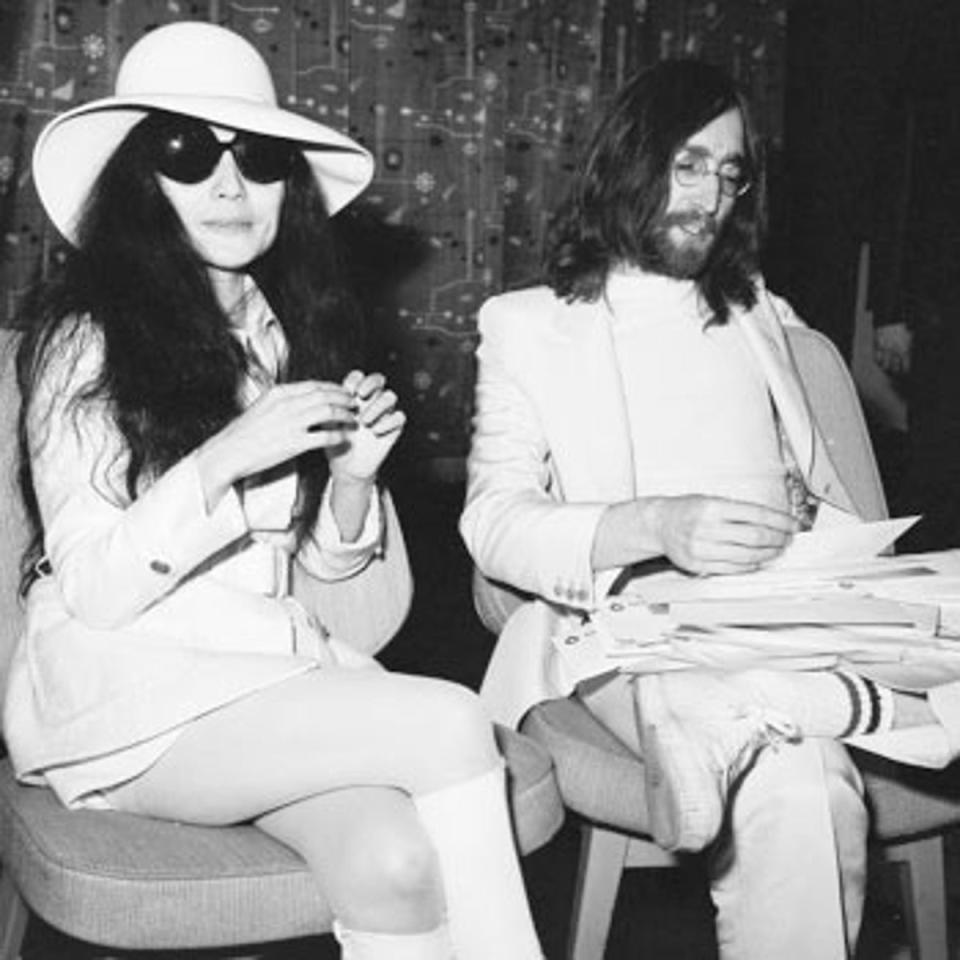
In March 1995, McCartney, Harrison and Starr started working on Now and Then by recording a backing track, however after only a day’s work, the song was abandoned, and scrapped. Lynne said the session – which took place, like all the Anthology sessions, at McCartney’s studio at The Mill, in East Sussex - consisted only of “one day – one afternoon, really, messing with it. The song had a chorus but almost totally lacking in verses. We did the backing track, a rough go we really didn’t finish.”
Although there was a mains hum on the original recording, the dreamy quality of the original record, plus the passages between the vocals, actually afforded the song more of an experimental feeling, one that would have suited some playful extemporising. Harrison for one felt the song didn’t warrant any more attention – McCartney once said Harrison claimed it was “f***ing rubbish”. In 1997, he would say, “George didn’t like it. The Beatles being a democracy, we didn’t do it.”
At the time, another song felt unnecessary. After all, the success of the Anthology album meant the Beatles revival was now in full swing. The anticipation in the press was feverish, and in some circles Free as A Bird was being treated as though someone had just discovered an unpublished novel by J.D. Salinger.
And if anyone were in any doubt as to the continued popularity of the group, one only had to look at the sales figures: in the UK, 450,000 copies of Anthology were sold in its first day of release, the most sales for an album in a single day ever. The compilations were like fashion weeks, staggered every six months to complement the season. So as soon as Anthology 1 had appeared, the advancepublicity started for Anthology 2, and ditto Anthology 3.
Consequently, there was a huge amount of speculation regarding which tracks had or had been sanctioned for inclusion. At the time there was a lot of talk about whether or not the albums were going to contain McCartney’s infamous 14-minute avant-garde opus Carnival of Light.
Originally commissioned for the Million Volt Light and Sound Rave, an underground event held at the Roundhouse in London in early 1967, it was recorded during a session for Penny Lane and was largely a collection of echo-laden percussion, backward tape loops, and what might be now called simply “bashing”.
Those who have heard it tend to call it “experimental”, although having heard it myself I think I’d describe it as four men using blancmange to make fire. For serious collectors, for years this was the holy grail of Beatle memorabilia, a recording that was so legendary it was thought by some to be purely mythical. But the track did exist, and McCartney lobbied hard for it to be included, only to have it vetoed by Harrison.
McCartney wanted it included to prove his avant-garde affiliations, which is precisely why Harrison didn’t want it in there.
Not that it mattered, as there were hundreds of other Beatle morsels for the band and George Martin to choose from. Anthology reminded us all that as well as being pop culture behemoths who became global citizens, the Beatles were also obsessively, almost pathologically creative, constantly experimenting, always pushing the culture forward – not just nudging, but often by force.
As Rolling Stone said in its review of Anthology 2 (released six months after the first one), “the essence of the Beatles’ legacy is the deceptive ease with which the band assimilated musical influences from J.S. Bach to Chuck Berry, from Ravi Shankar to Karlheinz Stockhausen.”
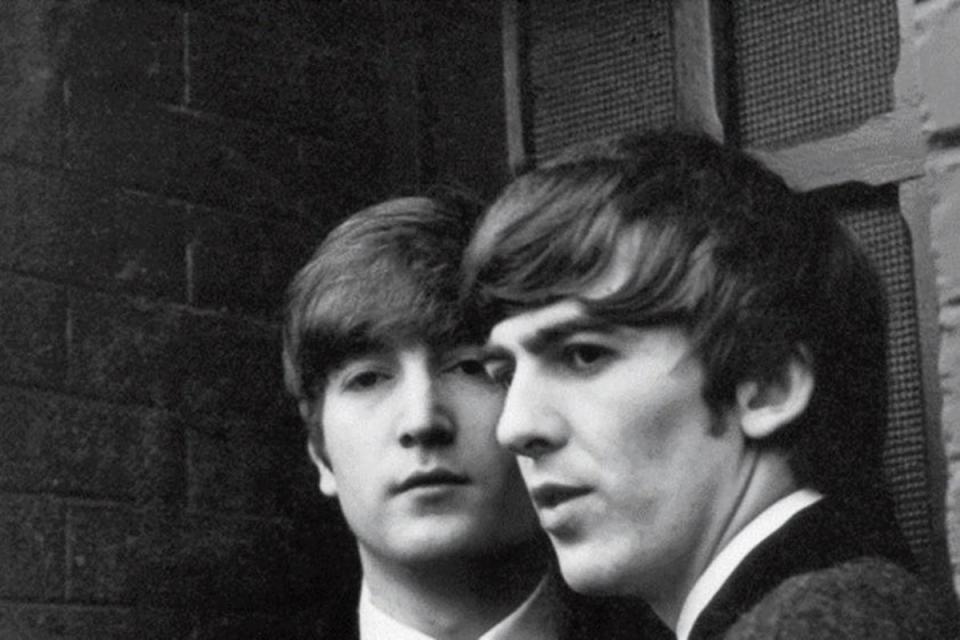
The creative hothouse of the studio was their sanctuary, their gilded shed, their laboratory, their library, their church. Even casual listeners could experience not so much a pang of musical nostalgia, but rather a creeping realisation that while Britpop’s imitation was the sincerest form of flattery, perhaps the originals really were the best.
And the material on the albums was fascinating. “Any detail, any faint suggestion of context or intent, anything at all that might shed a little light on the creative process, assumes an incalculable worth,” said the reviewer in Mojo. “If you’re the type whose pulse quickens on learning that Lennon began A Day in The Life with two bars of ‘Sugarplum fairy, sugarplum fairy’, or that McCartney concluded a version of I’m Down with the words ‘plastic soul, man, plastic soul’, then this is very heaven.”
The accompanying documentary series was timed to coincide with the album’s release, and featured new interviews with the remaining Beatles, as well as wealth of truly amazing archive material, a lot of it unseen. The retelling of the Beatles story, intertwined with the vast number of alternative versions of familiar songs, meant that we were presented with an immediate parallel history of the Beatles’ lives, as well as our own.
In this sense, the whole experience felt like some kind of fantasy, a nether world of wonderful memories that now had alternative narratives, alternative endings. Listening to the Anthology albums started to feel like a remixed version of our own lives, like finding different variants of familiar family snapshots. “Oh look, here’s a photo of Vera, Chuck and Dave, but this one’s taken just after Dave dropped the cake, and they’re all laughing!”
I remember its release in a professional capacity, rushing down to Apple Corps in Ovington Street in Knightsbridge, to meet the Beatles’ long-term publicist Derek Taylor, to discuss the ways in which we – The Sunday Times – could feature this monumental event.
If the hype surrounding the unveiling of Anthology 1 wasn’t enough, Taylor’s old-school huckster enthusiasm compounded the excitement, talking about the contents of the record in the way the directors of the British Museum talked about the Treasures of Tutankhamun exhibition in 1972.
He was a tremendous gossip, outlandish at times, and could be quite confrontational when he saw fit. Taylor said Anthology was “The Beatles’ attempt to reclaim their own history… We are still trying to preserve our humanity and humility amid all the craziness and greed. This band is f***ing tight. That’s why they all had to go and see the Maharishi together. They still behave like that. It’s the Three Musketeers.”
A year after the launch of Anthology 1, Taylor was at an awards ceremony in London, to see George Martin honoured for his work on the project. It was a star-studded audience, and included Mick Jagger, Oasis, Rod Stewart, and all of U2. The guest presenter giving Martin his award was the legendary Pop artist Peter Blake, whose speech included the fact he’d only been paid £200 for his work designing the sleeve of Sgt. Pepper’s Lonely Hearts Club Band.
As Blake continued his introduction, musing on whether or not he still owned the copyright, Taylor raised his head and said, in a voice that could no doubt be heard in a different time zone, “Shut up, you pompous c***!” Not only did he manage to immediately quieten the room, he also managed to shut up both Liam and Noel Gallagher, who were arguing on a nearby table. The Beatles had out Britpopped Britpop.
The last time I saw Taylor was around this time, and I remember the extravagant scarf he wore – I thought – ostentatiously around his neck. He would die a year later of throat cancer. His death was another interruption for the Beatles, although the Apple HQ appeared to be as alive as ever, and whenever I visited, you could be guaranteed a sighting of label boss Neil Aspinall, George Martin or even one of the Threetles themselves. The Beatle comeback was in full swing, gathering momentum seemingly by the hour.
I interviewed both McCartney and Ono at the time, and a short while later, Starr too, but while both Macca and Yoko – who it could be said were the real architects of the project – were comprehensively enthusiastic about Anthology, by the time I got to Ringo I think some of the shine had come off.

For most of the sixties we knew him as a cuddly, ugly-cute pop star, a happy go lucky imp ever ready with a self-deprecating quip or nonsensical epigram (he famously came up with titles for various Beatles songs such as Tomorrow Never Knows, although 1964’s A Hard Day’s Night, which has forever been associated with him, was actually coined by the singer Eartha Kitt a year earlier).
But by the mid-nineties Ringo was not so cuddly anymore, not so self-deprecating. The moptop had long grown tired of being cast as the bumbling Beatle, and he was certainly tired of decoding their legacy for others.
“I never read anything about the Beatles, never,” he told me. “A lot of people like to make stuff up and I’m sick of it. Doing the Anthology was our way of setting the record straight. Often our accounts of what happened would differ, but what it did show was how we lovedeach other. Then we grew up and we broke up.
"Thank God the Beatles happened in the Sixties and not now. It was pretty tough on us but not as tough as it is today, particularly for groups like Oasis. There aren’t any pictures of us in clubs, and the Beatles were in clubs every night. We could escape, unlike this lot. I don’t lie awake at night worrying about Oasis, though. The Beatles had a couple of drinks too in the Sixties and we made it through. We’re still here.”
The reemergence of the Beatles also reminded us what a soap opera it all was, and while most of their new fans hadn’t been around when the four of them had been using the newspapers to take pot shots at each other, most of them were well-versed enough in the history of the Beatles; to have them back, still using the newspapers to undermine each other, was almost an additional extra.
George Harrison seemed to find it easy to disparage McCartney, no doubt thinking in his karmic way that he still had a long way to go to make up for being sidelined as songwriter, but Ringo appeared to save his wrath for members of the press. He loathed talking about the past, particularly the B-E-A-T-L-E-S, so interviewing him could be tricky.
When we met, I was told that there was to be no booze or cigarettes around, although as the interview was scheduled to start at 9.30am, this wasn’t too much of a problem. Ringo hadn’t had a drink since 1988, and usually didn’t like to be reminded of the fact. He might have known he’d have problems with drink, as he had had his first alcoholic blackout aged nine.
Being in the Beatles didn’t help; the band had always been partial to a few Scotch and cokes, while Ringo’s drinking started to get worse in the mid-Seventies, shortly after his solo career peaked. His cognac drinking became legendary, and he once said, “I wouldn’t go out because you’d have to be in the car for 40 minutes without a drink.”
The reemergence of the Beatles also reminded us what a soap opera it all was.
Dylan Jones
“He can be a handful,” said someone who used to work with him, “but if you steer clear of the Beatles and the booze you’ll be alright.” As it was, Ringo brought these subjects up independently.
"Though he’s still lumbered with the clownish image, I think he handles it quite well,” said an executive who used to work at Apple in London. “With day to day matters he’s always been easy to deal with – in fact, you get the feeling he’s overridden by the others [theBeatles] a lot of the time.
"It’s only when he gets involved with those he doesn’t know that his other side shows through. He can be mistrustful of people.”
Still, perhaps unsurprisingly, the success of the Anthology series eventually made all three remaining Beatles more amenable, and in Harrison and Starr’s case, far more willing to engage with the media. McCartney had never stopped engaging with the press, it had only been his own past he’d had a problem with.
What had changed, of course, was the fact that the Beatles now had product – new product, fortified old product – and a realisation that the market was only going to become energised if it had something to consume. And so, as they had done so many times in the past, the Beatles innovated, reinventing the heritage market by excavating the past rather than simply repackaging it.
A new appreciation
One of the ways in which the band started to be re-appreciated was a new understanding of their craftsmanship: there was an artisanal aspect to their work, and while none of the four were virtuosos – hence the deployment of Eric Clapton on George Harrison’s While My Guitar Gently Weeps – it was their doggedness and ingenuity that people appreciated, and the genius that resulted from that doggedness.
The exhaustive doodles on the Anthology records only confirmed what we had already thought: these guys really put the hours in. Not only that, when they released the remixed Love album, the one that accompanied the Las Vegas Cirque du Soleil show, Ringo was being hailed as the best drummer to emerge from the whole period. Who knew?
So if anything, the Beatles brand was bigger than it had been before, as was their ability to surprise.
The other, quintessentially important aspect of the Beatles reboot was their international appeal. They had always been a global phenomenon, and so consequently Anthology was a genuinely global event. It was the first Beatles album to enter the Billboard chart at Number One, selling nearly 900,000 copies in its first week alone. It was certified 3 x Platinum after six weeks in the charts, creating a genuine media phenomenon. The Beatles were all over American network television, on the covers of American magazines, and all over AM and FM radio. The Beatles were well and truly back.
Bob Iger, who would one day run The Walt Disney Company, was at the time the President of the US TV network ABC, who paid $20m for the privilege of screening Anthology.
“I don’t think there is anyone that comes close to being as marketable as they are,” he said. “According to Steve Chamberlain, the Beatles brand manager at Capitol/EMI America, “What we are doing is managing the Beatles as Coca Cola manage Diet Coke.”
Which meant that they were very clearly the most successful Britpop export, bigger than Oasis, much bigger than Blur, and far bigger than Pulp, Elastica and Supergrass combined. It was the success of Anthology that reminded the world that Britain was its cultural capital, not just back in the Sixties, when the Beatles were in their pomp, but now, in the Nineties.
There was lot of sound coming out of Britain, but the noise seemed to fade as it made its way across the Atlantic. So it seemed as though Britpop was a bit like a lung volume test, when you blow into a tube until you can’t blow any more. No matter how much it blowed, it seemed, Britpop only had so much puff. Well, compared to the Beatles, at least.
A few months after the final Anthology release, I was invited by Yoko Ono to the seventh-floor apartment in the Dakota, the huge gothic block on New York’s Central Park West, which she once shared with her husband. This was where he recorded the bulk of his demos, and where he had first worked his way through Free as A Bird.
The first thing I noticed when I walked in was John Lennon’s white baby grand, the celestial piano on which he wrote so many of his songs. Though it had been home to Ono since the couple bought it in 1973, to a visitor the gigantic nine-room apartment felt somewhat like a private chapel. I was asked to remove my shoes and the slightly religious sensation was intensified as the afternoon sun caught the piano’s white keys and the silver picture frames on top of it.

I just couldn’t stop staring. It wasn’t just the Beatles-related artefacts that appeared to be strewn, haphazardly, around the flat, it was the more prosaic realisation that, OMG, John Lennon had sat on that sofa, John Lennon had probably drunk from that mug and the same John Lennon had spent the best part of the 1970s looking out of his Dakota windows at Central Park. Look, I thought to myself, I’m doing it too!
It was a weird sensation, briefly imagining yourself as John Lennon, a man who was as mythical as he was legendary, a man who could be as humdrum as he was remarkable.
Lennon was everywhere: staring down at me from the Warhol painting in the “black” room, in the photographs on the walls in the kitchen and in dozens of those silver picture frames on top of his piano (John with Yoko, John with Sean, John with Julian, John with Paul… but mainly John with Yoko).
Apartment 72 was something of a museum too, because as well as the acres of Egyptian antiques and dozens of Ono’s own installation pieces, it was littered with paintings, lithographs and famous silk screens: a de Lempicka here, a de Chirico there.
This wasn’t Graceland, this was a living apartment. It was here on 72nd Street that John and Yoko spent their five years of role reversal. While Yoko spent her days in their office on the ground floor, John would be upstairs, attending to Sean and “watching the trees change colour” in Central Park.
“This is where John used to bake bread,” said Ono as she showed me into the kitchen, with its spice jars, chopping boards and the unremarkable detritus of domesticity. “Every day he’d get up and make Sean’s breakfast while Sean played on the floor. Then he’d get up and make bread while I went to work downstairs. Often, I’d work at the kitchen table just to be near them. We were a family, and this was our home, Sean’s home, and because of that I’ll never leave.”
Ono had had more than her fair share of bad press in the years since she first met Lennon. With his death, it initially appeared to actually get worse, as if we somehow couldn’t bear the thought that she was still alive while he wasn’t (before I met her, one of Yoko’s American publicists even asked if I had any deep-rooted animosity towards her, as though it were a given; she seemed surprised when I said I thought she had actually been treated unfairly, although I can’t have been the first person to say it).
This vilification she carried throughout her career, much like Linda McCartney, who until her death was also, rather disgustingly, considered to be Paul’s undoing, at least creatively.
In person, Ono certainly didn’t seem like a business barracuda, but then it was obvious from the way in which her underlings scattered from the apartment with the wave of her hand that she was probably a formidable boss. Tiny, dressed entirely in black, she was extremely birdlike, talking in short, staccato sentences.
She seemed endearingly dotty rather than demonstrative, often repeating herself or misunderstanding questions. I’m sure she was acutely responsible when studying the bottom line, but then, as the custodian of John Lennon’s estate, she ought to have been.
The office on the ground floor of the Dakota was as fascinating as the apartment, being crammed with all sorts of valuable Beatles memorabilia and was where Yoko sat with her assistants, approving advertising artwork and plotting her husband’s online future. In her private office next door, fluffy white clouds floated across the sky-blue ceiling.
There was a bronze sculpture of an apple with two bites out of it and, on her desk, a framed blank cheque, made out to Yoko and signed by John; I’m sure to certain cynics it would be an apposite approximation of their relationship.
“There are those who will never forgive me,” said Yoko, as I left the Dakota building that day. “They called me a professional widow, called me a dragon lady, called me lots of things, but you have to take strength from that. I can’t change the way people feel, I just have to deal with it in my own way.”
For John, Grow Old with Me was song that would be a standard; the kind they would play in church every time a couple gets married.
Yoko Ono
So, is Now and Then the final piece in the Beatles jigsaw, the end of their operational narrative arc? Perhaps not. There was a fourth song on Yoko One’s cassettes, and many believe it is the best Lennon demo of all. The fourth song on Yoko’s tapes was Grow Old With Me. It hailed from the Double Fantasy period, a version of which had actually already been released, on the 1984 posthumous John Lennon album Milk and Honey.
“For John, Grow Old with Me was one that would be a standard,” said Yoko, “the kind they would play in church every time a couple gets married. It was horns and symphony time.”
Like Hey Jude, Lennon imagined it as the sort of song people would sing around campfires. “It was a song John made several cassettes of, as we discussed the arrangements for it,” said Yoko. “Everybody knew how important those cassettes were. They were in safekeeping… All of them disappeared except the one on the end of the record. It may be that it was meant to be this way, since the version that was left was John’s last recording… recorded together in our bedroom with a piano and a rhythm box.”
The Lennons identified closely with Elizabeth Barrett and Robert Browning, and Grow Old with Me was a response to Ono’s own song Let Me Count The Ways (based on Barrett and Browning’s Sonnets From The Portuguese), reflecting Browning’s Rabbi Ben Ezra ("Grow old along with me, the best is yet to be”).
Although unfinished and unpolished, the songs on Milk and Honey, in the words of Lennon expert Paul Du Noyer, “diarise his hopes and fears with compelling honesty”. Grow Old with Me was no different, an emotive plea that sounds not dissimilar to the bootleg demo of Free as A Bird – over-reaching vocals and faltering keyboards.
It would be ten years before the song was turned into Lennon’s last mini classic.
Having had it rejected by the remaining Beatles for the third Anthology record, in 1996 Yoko would ask George Martin to overhaul the song for inclusion on the four-CD Lennon Anthology and he did it with ease. Martin liked the song more than any other Lennon demo he had heard since his death and used his considerable skills to give it the gravitas it needed.
Its arrangement is unassuming, even business-like: the strings swell and the flutes trill in all the right places, leaving Lennon’s plaintive, occasionally maudlin voice to carry the song to its inevitable conclusion. Martin’s judgement is perfect, letting the song sing for itself.
With its stately Imagine feel and the same vamping piano, Grow Old with Me is one of Lennon’s less flinty songs (when he chose to, Lennon was capable of mining even deeper seams of sentimentality than McCartney), almost a hymn.
The Beatles should have persevered with Grow Old with Me. Who knows? Maybe one day they will.
Now And Then/Love Me Do double A-side single are available now. The Beatles’ 1962-1966 (The Red Album) and 1967-1970 (The Blue Album) Collections expanded, mixed in stereo & Dolby Atmos for 2023 edition is also available now. Let It Be launches on Disney+ on May 8

 Yahoo News
Yahoo News 
